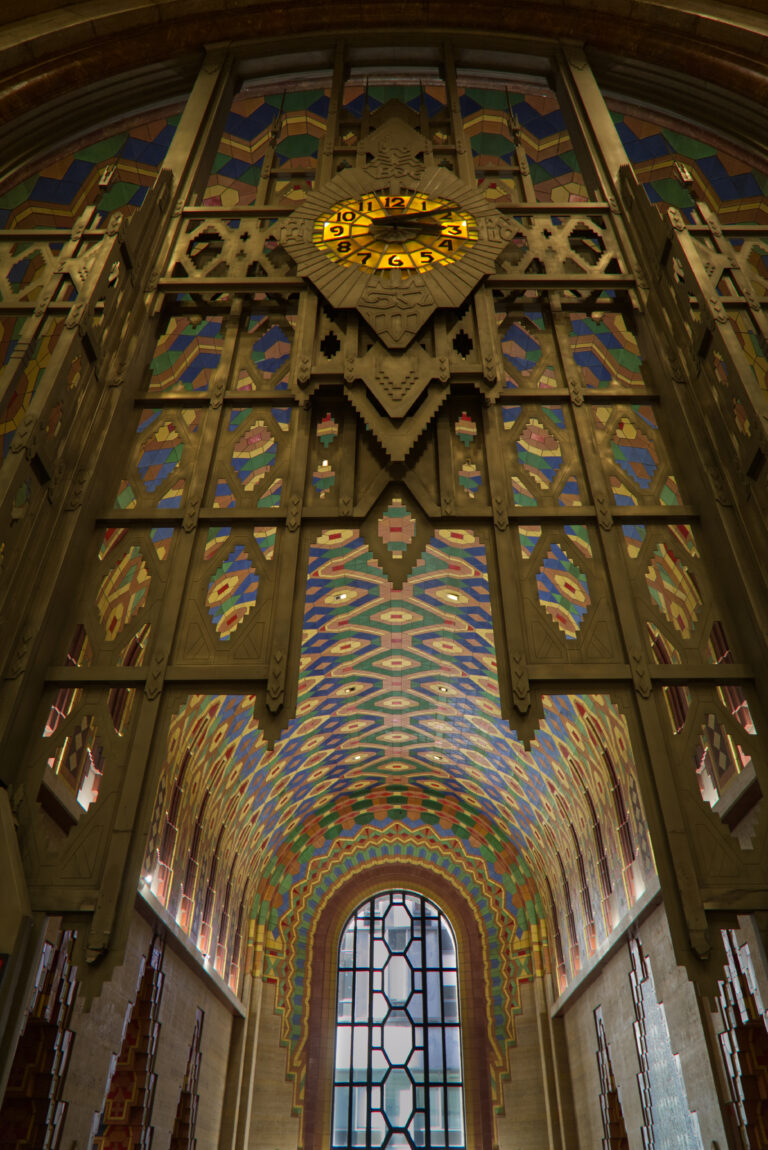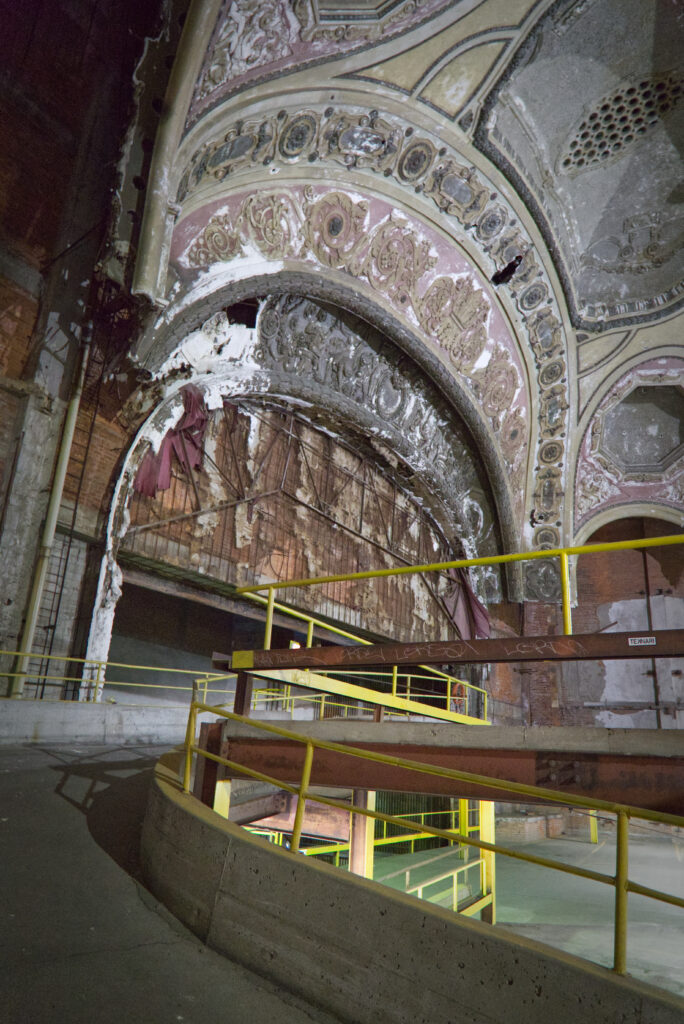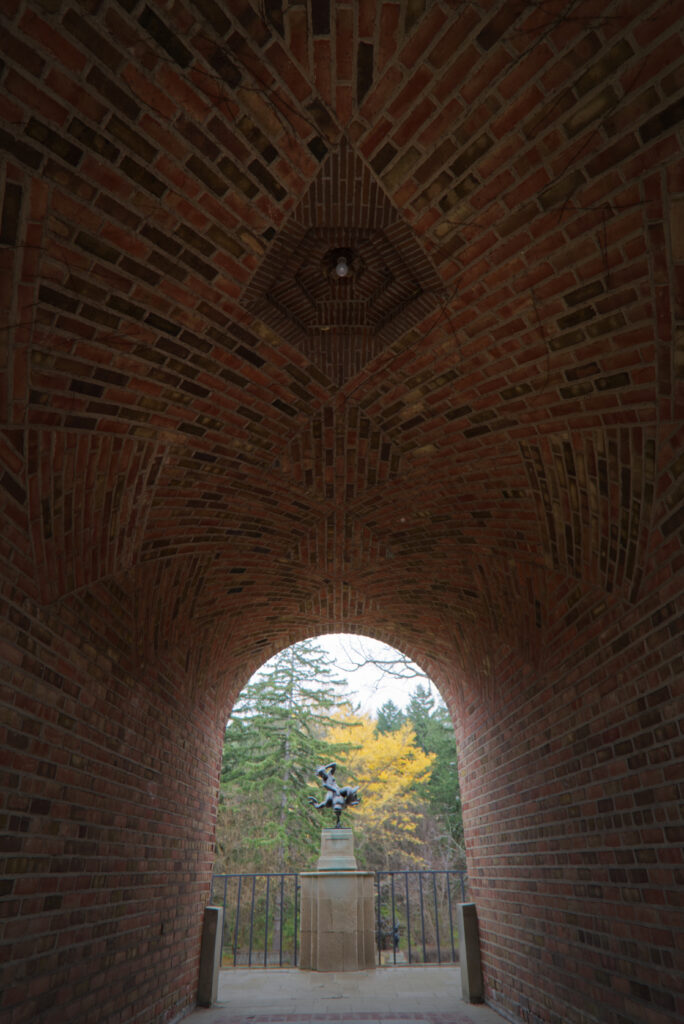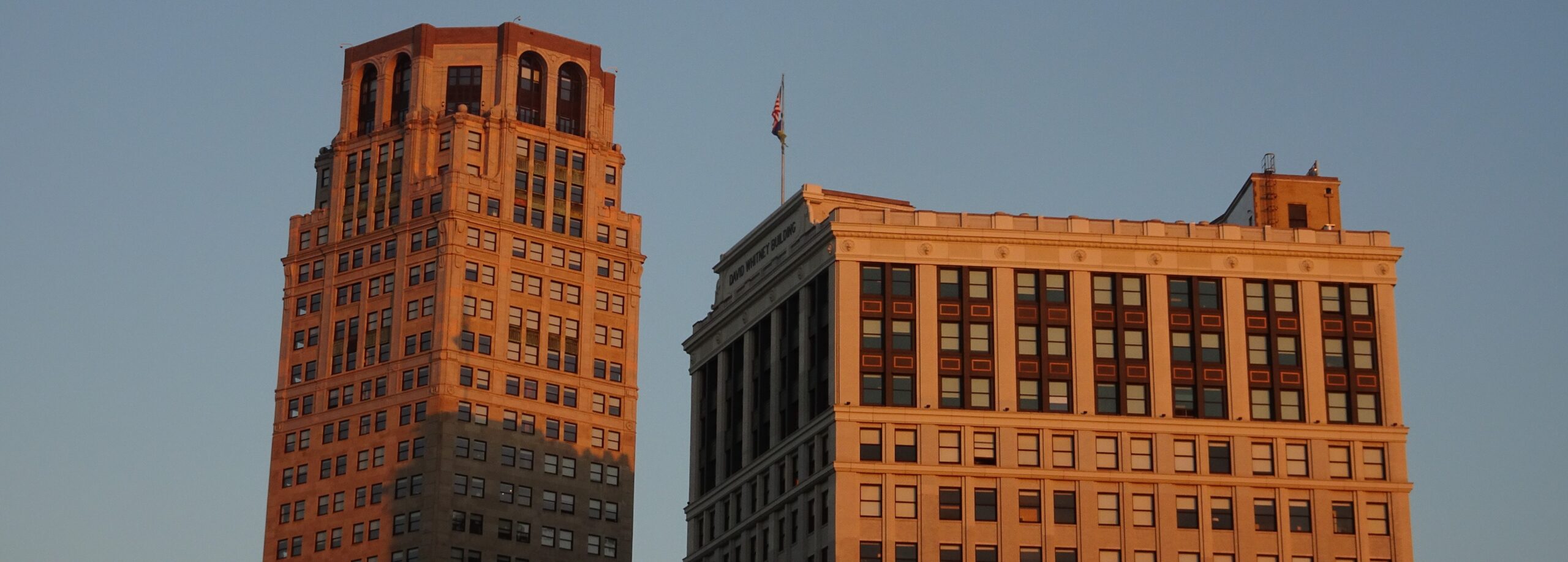After visiting and experiencing the city it is clear that there is a stark difference between the once lively motor and industrial city of the early 20th century and the now quiet, bespoke downtown. Covered in scaffolding in an effort to revitalize, there is a clear indication of a willingness re-invest in Detroit since its economic downturn of the mid-20th century.
The team was quick to notice the resurgence of art, with themes of African American culture in response to the recent Black Lives Matter protests, picking up on themes of inequality deeply rooted within the history of Detroit. Art is often the best form of cultural resurgence and the first to communicate injustices within society. Many murals and art covered alleys bring a splash of colour and interest to industrial quarters, modern buildings and areas otherwise reclaimed by various cultural groups.
VISITING DETROIT COMES WITH UNDERSTANDING THE EVOLUTION AND COMPLEXITIES OF A CITY THAT HAS SUFFERED IMMENSELY FROM ECONOMIC CHANGES AND A SHIFT TO A GLOBALIZED SOCIETY.
EXPLORING KHAN MARVELS AND ART DECO INDULGENCES
Known for its indulgent architecture, Detroit is recognized for its expressive art-deco era, particularly those designed by well-known architect Albert Khan. Among the Khan buildings visited included: The Detroit Athletics Club, the Fisher Building, the Albert Khan Building, Detroit Free Press Building, and the Detroit Golf Club.
The rich range of mosaics, local Pewabic tiles, marble, granite and local sandstone are found at almost every street corner paired with luscious hints of gold and brass accents, truly encapsulating the “joie de vivre” of the art-deco era. The perks of attending the APT field sessions meant private tours of some of these Khan Jewels, often led by the conservation team working on their rehabilitation. There is an effort to make many of these buildings mixed use, with luxury condominiums and rentals—a model perhaps for revitalizing downtown cores across North America since the shift to hybrid work in the Covid-19 Pandemic.

THE ABANDONED AND SUBSEQUENT REUSE
While the city is undergoing many economic changes that indicate future investment and growth of new industries such as tech, many industrial buildings have been abandoned as relics – a testimony to a once affluent motor industry. An urban explorer’s dream perhaps…or a conservation architect’s nightmare. Regardless, the opportunity to see these buildings abandoned informs material degradation rates while proceeding to notice the impacts of a local economy on built cultural heritage.
As part of a Field Session entitled ‘Ruins of Detroit – The remaining vestiges of ruin porn’ Emily was able to tour the infamous Packard Plant. Designed by Detroit Architect Albert Kahn, by the early 1900s, the facility became the largest automobile production facility in the United States – encompassing multiple buildings, and a total of over four-million square feet. Beginning in 1956, portions of the plant were sold off, demolished, or left to weather. The City of Detroit took possession of the site around 1998, and it has been mostly neglected and abandoned for the last twenty years.

SYMPOSIUM ON INDUSTRIAL SITES, EMBODIED CARBON AND ADAPTIVE REUSE
Hosted jointly by the APT Technical Committees on Sustainable Preservation and Modern Heritage on the beautiful campus of Cranbrook, this symposium investigated the unique challenges and opportunities of working with industrial heritage while minimizing embodied carbon. Caitlin DeSilvey invited us to ponder the idea of “adaptive release” or allowing nature to reclaim sites where reuse may not be practical. This was followed by many inspiring stories of adaptive reuse of industrial sites including Shrewsbery Maltings Flax Mill (UK), Ortlieb Bottling House (Oil Springs, PA), Kieran Timberlake offices (Philadelphia, PA), and the Navy Yards (Washington, DC). The symposium concluded with an engaging discussion on vernacular preservation of everyday, overlooked industrial sites in Michigan’s Keweenaw Peninsula through a landscape/GIS and crowdsourcing approach.


